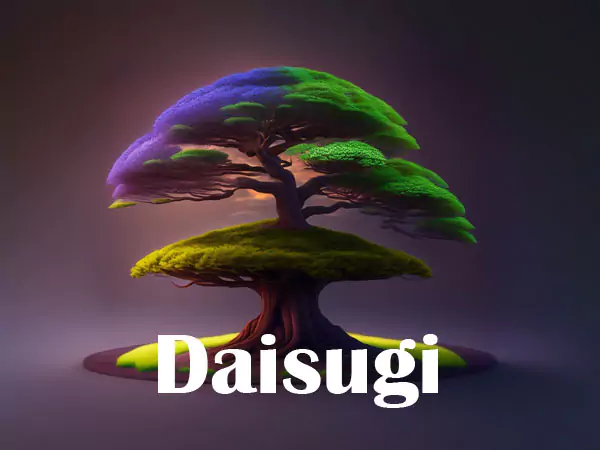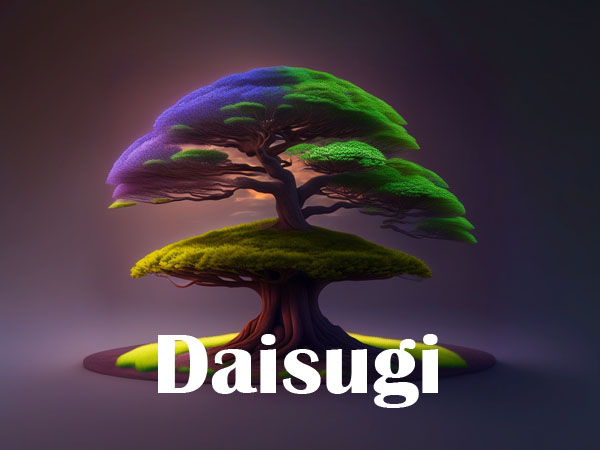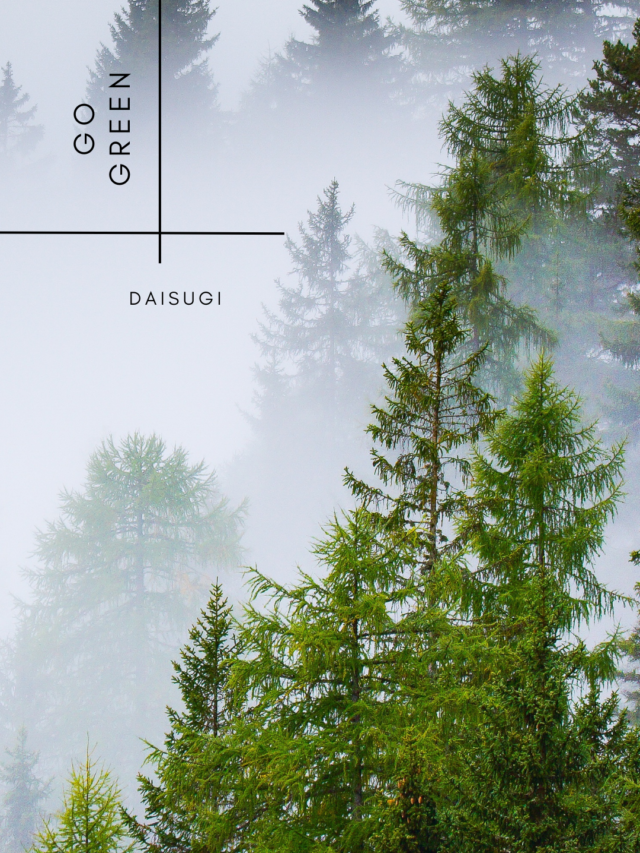Daisugi: How the Japanese make wood without cutting trees

daisugi forestry, daisugi cedar, japanese daisugi technique, daisugi tree japan, daisugi lumber, japanese lumber tree, japanese tree growing technique, japanese tree harvesting, daisugi technique, daisugu, japanese tree technique, daisugi technique japan,
Introduction
In the enchanting forests of Japan, a remarkable technique known as “daisugi” has been practiced for centuries. Derived from the words “dai” meaning “stand” and “sugi” referring to the Japanese cedar tree, daisugi is a unique method of sustainable forestry. This ancient practice, rooted in harmony with nature, has gained renewed interest for its ecological benefits and artistic appeal. In this article, we will delve into the world of daisugi, exploring its origins, techniques, environmental benefits, cultural significance, and its application in modern forestry practices.
Shoots from the tree’s base are pruned to keep the trunk straight. It is thought that daisugi manufacture began during the Muromachi period. The tea ceremony grew popular at the time in part because daisugi logs were utilised in tea room construction, such as the tokonoma alcove. Kyoto’s Kitayama district became well-known for its daisugi forests.
The Origins of Daisugi
The Historical Background
Daisugi traces its roots back to 14th-century Japan, during the Muromachi period. The increasing demand for timber and the desire to maximize resources led to the development of this innovative forestry technique.
The Birth of Daisugi: Necessity and Ingenuity
Daisugi emerged as a solution to overcome the limited availability of flat land suitable for agriculture. By cultivating trees vertically, the practice enabled multiple tree trunks to grow from a single stump, increasing the yield of timber in a confined space.
Daisugi’s Rise and Spread in Japan
Daisugi gained popularity in the Kyoto region due to the high demand for construction materials and the scarcity of suitable land. Over time, the technique spread to other parts of Japan, becoming an integral part of traditional forestry practices.
The Daisugi Technique
Selecting and Preparing the Mother Tree
Daisugi begins with carefully selecting a healthy and mature mother tree. The tree is then pruned and trimmed to prepare for the propagation of new shoots.
Regrowth and the Formation of Daisugi
After pruning, the mother tree sends out new shoots known as “sashimono.” These shoots are carefully nurtured and supported with intricate frameworks of bamboo scaffolding, allowing them to grow straight and tall.
Maintenance and Pruning Practices
Regular maintenance is crucial to the success of daisugi. Skilled craftsmen continuously monitor the growth of the shoots, ensuring they develop strong and straight trunks. Pruning techniques are employed to remove unwanted branches and promote optimal growth.
Sustainable Harvesting and Continuous Growth
Once the shoots have matured, they are selectively harvested, leaving the original stump intact. This sustainable harvesting technique allows the mother tree to continue producing new shoots, perpetuating the cycle of daisugi.
Environmental Benefits of Daisugi

Preservation of Old-Growth Forests
Daisugi promotes the preservation of old-growth forests by maximizing timber yield from a single tree stump. Instead of clear-cutting large areas, daisugi allows for selective harvesting, preserving the integrity of the forest ecosystem.
Maximizing Timber Yield with Minimal Land Use
The vertical cultivation of trees in daisugi maximizes timber yield while minimizing the land area required. This efficient use of space contributes to the conservation of forests and minimizes the ecological impact of deforestation.
Promoting Biodiversity and Habitat Conservation
Daisugi encourages the coexistence of diverse plant and animal species within the forest ecosystem. By preserving the natural environment and promoting sustainable forestry practices, daisugi supports habitat conservation and biodiversity.
Cultural Significance and Artistic Beauty

Daisugi as an Art Form
Beyond its ecological benefits,
Daisugi is celebrated for its artistic beauty. The visually stunning sight of perfectly aligned tree trunks rising from the forest floor has captivated artists, architects, and nature enthusiasts alike.
Aesthetic Elements and Architectural Applications
The straight, slender trunks of daisugi-grown trees have found practical applications in traditional Japanese architecture. These timber resources are used for various purposes, including construction, furniture, and artistry, showcasing the unique aesthetic appeal of daisugi.
Daisugi’s Influence on Japanese Culture and Design
Daisugi has left an indelible mark on Japanese culture and design. It has inspired artists, influenced architectural styles, and become a symbol of sustainable living in harmony with nature. The ethos of daisugi has permeated various aspects of Japanese society, reflecting the deep respect for the environment and the interconnectedness of human life with the natural world.
Daisugi in Modern Forestry Practices
Revival and Revitalization Efforts
In recent years, there has been a renewed interest in daisugi, both within Japan and globally. Efforts are being made to revive and promote this traditional practice, recognizing its potential for sustainable forestry and environmental conservation.
Sustainable Forestry and Economic Viability
Daisugi presents a sustainable alternative to conventional forestry practices, offering economic viability while prioritizing environmental preservation. The controlled growth and selective harvesting of trees can contribute to a more balanced and resilient forest ecosystem.
Daisugi’s Potential for Global Application
While daisugi has deep cultural roots in Japan, its principles and techniques can be adapted and applied in other regions. By integrating daisugi-inspired practices into forestry management worldwide, we can work towards more sustainable and ecologically conscious approaches to timber production.
Challenges and Future Outlook

Preserving Traditional Knowledge and Skills
The transmission of daisugi’s traditional knowledge and skills from one generation to the next poses a challenge in the modern era. Efforts are being made to document and preserve this ancient practice to ensure its continuity.
Balancing Tradition and Technological Advancements
As technology advances, finding the balance between traditional practices and modern innovations becomes crucial. Incorporating technological advancements in the cultivation and management of daisugi can enhance its efficiency and long-term sustainability.
Encouraging Awareness and Adoption of Daisugi Worldwide
Raising awareness about daisugi and its potential benefits is essential for its global adoption. Through education, cultural exchange, and collaborative initiatives, the beauty and ecological significance of daisugi can be shared with the world, encouraging its wider implementation.
Conclusion
In a world where sustainable practices are increasingly vital, daisugi shines as an exemplary model of ecological harmony and cultural heritage. This ancient Japanese technique, with its meticulous approach to forestry, offers valuable lessons and inspiration for modern-day environmental stewardship. The revival and recognition of daisugi’s environmental benefits, artistic beauty, and potential for sustainable timber production provide hope for a future where humanity can coexist with nature in a harmonious and sustainable manner. Let us embrace the wisdom of daisugi and strive to create a world where ancient traditions and modern innovations converge for the betterment of our forests and our planet.
FAQs
If you want to know more, on the basis of querries, here are some frequently asked questions (FAQs) about Daisugi:
What is Daisugi?
Ans. Daisugi is an ancient Japanese forestry technique that involves growing trees vertically from a single stump to maximize timber yield in a limited space. It is a sustainable practice that promotes the growth of straight, slender tree trunks.
Where did Daisugi originate?
Ans. Daisugi originated in Japan during the 14th century, specifically in the Kyoto region. It was developed as a solution to overcome the scarcity of flat land for agriculture and the high demand for timber.
How does Daisugi work?
Ans. Daisugi starts with the careful selection of a healthy and mature mother tree. The tree is pruned and trimmed, and new shoots known as “sashimono” emerge. These shoots are nurtured and supported with bamboo scaffolding, allowing them to grow vertically and form a dense cluster of slender trunks.
What are the environmental benefits of Daisugi?
Ans. Daisugi offers several environmental benefits. It allows for selective harvesting, preserving old-growth forests and minimizing the ecological impact of clear-cutting. It maximizes timber yield with minimal land use, promoting sustainable forestry practices. Daisugi also supports habitat conservation and biodiversity by maintaining a healthy forest ecosystem.
Is Daisugi only practiced in Japan?
Ans. While Daisugi has its roots in Japan, its principles and techniques can be adapted and applied in other regions. The concept of growing trees vertically to optimize timber production can be explored and implemented in various parts of the world.
What is the cultural significance of Daisugi?
Ans. Daisugi is not only valued for its environmental benefits but also for its cultural significance. It is considered an art form and has influenced traditional Japanese architecture and design. Daisugi reflects the deep respect for nature and the interconnectedness of human life with the environment.
Can Daisugi be applied in modern forestry practices?
Ans. Yes, Daisugi has gained renewed interest and is being integrated into modern forestry practices. Efforts are being made to revive and promote this traditional technique due to its sustainability and economic viability. It offers an alternative approach to timber production that aligns with environmental conservation goals.
Are there any challenges associated with Daisugi?
Ans. Preserving the traditional knowledge and skills required for Daisugi is a challenge in the modern era. Ensuring the transmission of this ancient practice from one generation to the next is crucial. Balancing tradition with technological advancements is also a consideration to enhance the efficiency and long-term sustainability of Daisugi.
How can I learn more about Daisugi?
Ans. To learn more about Daisugi, you can explore books, articles, and online resources dedicated to Japanese forestry and traditional practices. Additionally, visiting Japan and experiencing the forests where Daisugi is practiced firsthand can provide valuable insights into this unique technique.
What is the forest with Japanese daisugi trees?
Ans. The forest with Japanese daisugi trees is known as the Kitayama cedar forest or the Daisugi forest. It is a unique forest in the Kitayama region of Kyoto, Japan, where specially cultivated cedar trees are pruned and trained to grow multiple, straight, parallel branches using the daisugi technique.
Why are the trees in the forest pruned in this way?
Ans. The trees are pruned using the daisugi technique to produce high-quality, knot-free cedar timber. This timber is in high demand for construction purposes, particularly for building temples, shrines, and tea houses.
What is the purpose of the daisugi technique?
Ans. The daisugi technique allows for the production of straight, knot-free timber without cutting down the whole tree. By pruning and training the trees to grow in a specific manner, the forest can continually provide valuable timber while preserving the overall health and beauty of the forest.
What is the significance of the Kitayama cedar forest?
Ans. The Kitayama cedar forest showcases the traditional daisugi technique and represents the sustainable practices employed in traditional Japanese forestry. It serves as an example of the harmonious relationship between human intervention and nature’s resilience.
Can visitors explore the Kitayama cedar forest?
Ans. Yes, the Kitayama cedar forest attracts visitors who appreciate its unique and artistic appeal. Visitors can explore the forest and witness the striking visual spectacle created by the daisugi trees.
Daisugi Web Stories
Source
Related Searches

